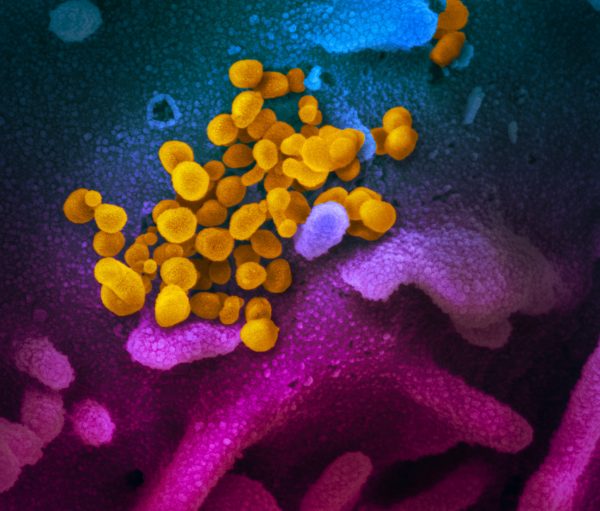
The number of Alaskans diagnosed with COVID-19 rose by 22 on Monday — the largest one-day increase in reported cases in the state. The Yukon-Kuskokwim region also recorded its first case of the disease, according to the state Department of Health and Social Services.
In total, 213 Alaskans have been diagnosed with COVID-19, the disease caused by the coronavirus.
Of the 22 newly-diagnosed Alaskans, 10 are from Anchorage, nine are from Fairbanks, two are from North Pole and one is from Bethel, said Dr. Anne Zink, Alaska’s chief medical officer. The Bethel case is related to out-of-state travel, the health department said.
Related: First COVID-19 case reported in the Yukon-Kuskokwim region
The new cases stem from midnight to 11:59 p.m. on Monday. The state health department is reporting the new COVID-19 cases in Alaska from the prior 24-hour cycle by noon each day. The cases are recorded based on the person’s place of residency, Zink said.
Nearly 7,000 people had been tested for COVID-19 in Alaska by the end of the day Monday.
Catch up on the latest stories about the coronavirus in Alaska.
The state health department reported no new deaths or hospitalizations. Six Alaskans have died after they were diagnosed with COVID-19 and 23 have been hospitalized. At least 29 Alaskans have recovered from the disease, according to the department.
Of the state’s total number of confirmed COVID-19 cases, the largest percentage — 20.19% — are in Alaskans ages 30 to 39, followed by 19.72% in Alaskans ages 50 to 59.
At a news conference Tuesday evening, Gov. Mike Dunleavy reminded Alaskans to practice social distancing, staying at least 6 feet away from people not in their households, to help slow the spread of the virus. The state needs more time to build up its healthcare system, he said.
“We’re trying to build up these defenses to deal with this curve that’s going to be coming,” Dunleavy said. “We’re hoping it’s a small blip and not something large that’s going to overwhelm our hospitals.”
Zink underscored that the disease is most contagious early on, when people might not feel that sick yet.
“It’s incredibly important that you’re staying away from others right now,” Zink said.
So far, most of the Alaskans diagnosed with the disease are from the Municipality Anchorage, with 98 cases. The Fairbanks area has 65 cases, and state officials have described the Interior Alaska community as a coronavirus hot spot.
“We remain concerned about Fairbanks,” Zink said. “We’re increasingly concerned about Anchorage.”
Early on, most COVID-19 cases were related to travel, Zink said. But, more recently, more and more cases have an unknown origin, meaning health officials don’t know exactly where the person got the virus, and that raises concerns.
“It wasn’t like, ‘I live with someone who has COVID,’ or ‘I traveled recently from New York,” Zink said. “They’re people who are kind of going about their daily experience and then started to not feel well.”
View all of the state’s data here.
Across the United States by Tuesday, the Centers for Disease Control and Prevention reported more than 374,000 cases of COVID-19 and 12,064 deaths.
Tegan Hanlon is the digital managing editor at Alaska Public Media. Reach her at thanlon@alaskapublic.org or 907-550-8447. Read more about Tegan here.





